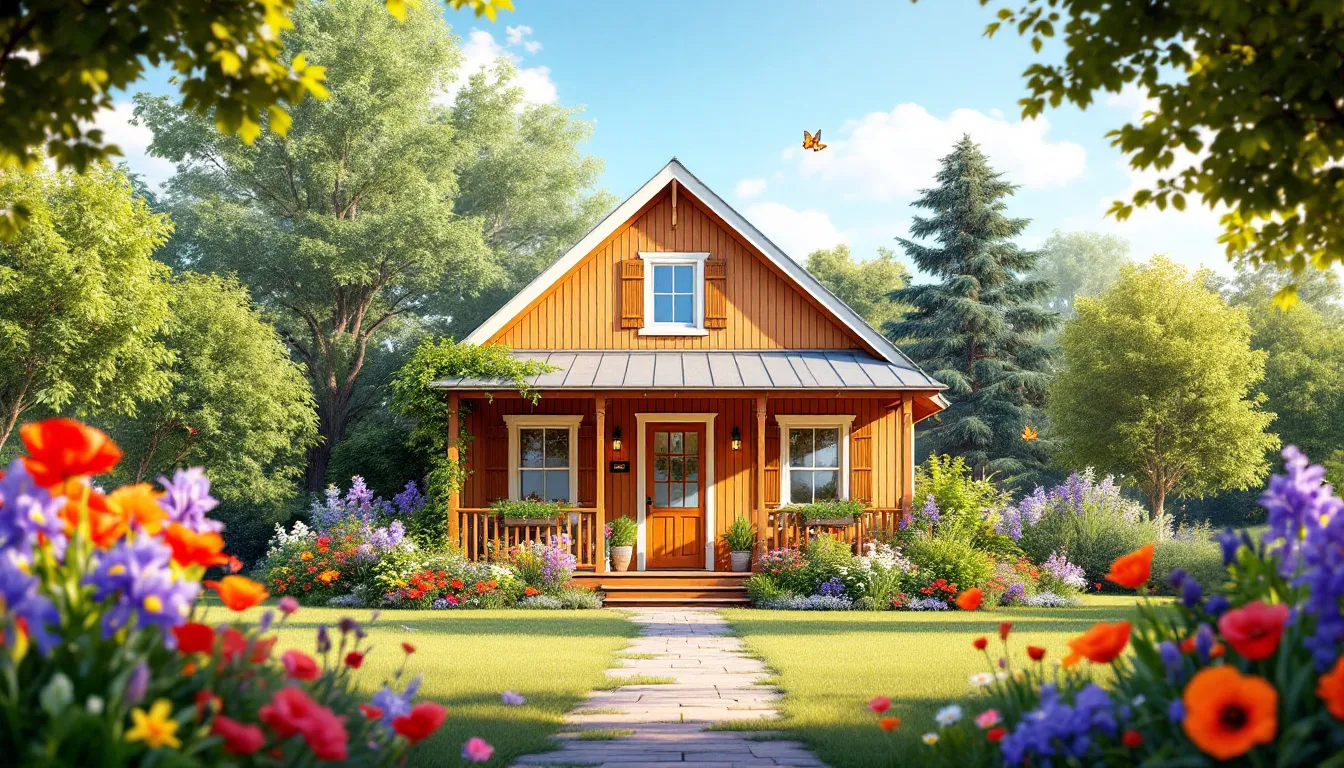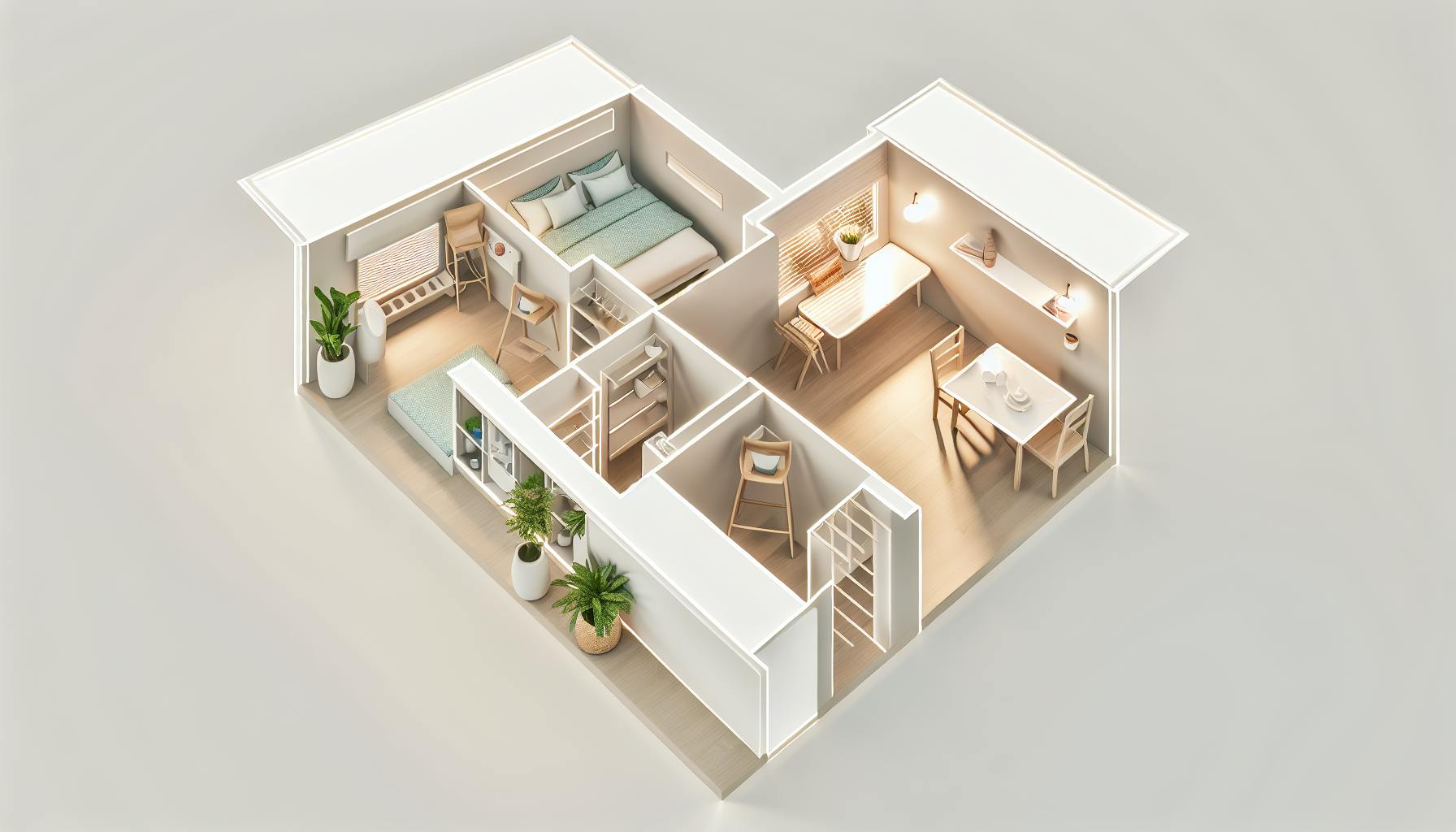European architecture blends classic styles with modern trends. Here's a quick overview:
-
Classical: Symmetry and columns from ancient Greece and Rome
-
Gothic: Pointed arches and tall spires
-
Renaissance: Return to classical forms with mathematical precision
-
Scandinavian Minimalism: Clean lines and functional design
-
Mediterranean: Warm colors and indoor-outdoor living
Key features across styles:
-
Mix of old and new elements
-
Use of natural materials
-
Focus on light and space
-
Blend of indoor and outdoor areas
Quick Comparison:
| Style | Key Features | Famous Example |
|---|---|---|
| Classical | Columns, pediments | Parthenon, Athens |
| Gothic | Pointed arches, tall spires | Notre Dame, Paris |
| Renaissance | Symmetry, ornate details | Prague National Theater |
| Scandinavian | Minimalism, functionality | IKEA furniture |
| Mediterranean | Terracotta, arched windows | Smith-Heberton House, California |
European architectural styles continue to influence modern design worldwide, adapting to new needs while keeping their timeless appeal.
Related video from YouTube
Classical Influences
Classical architecture from ancient Greece and Rome shaped European design. Its symmetry, proportion, and grandeur still influence buildings today.
Key elements:
-
Columns (Doric, Ionic, Corinthian)
-
Pediments
-
Arches and vaults
-
Domes
The Parthenon in Athens (447-432 BCE) is a perfect example of the Doric order. Its design has inspired architects for centuries.
Romans built on Greek ideas. The Pantheon in Rome (2nd century CE) shows off Corinthian columns and a huge concrete dome - an engineering marvel for its time.
Classical style isn't just ancient history. Modern European cities have plenty of neoclassical buildings:
| City | Building | Classical Features |
|---|---|---|
| Paris | Arc de Triomphe | Arches, columns |
| London | British Museum | Ionic columns, pediment |
| Berlin | Brandenburg Gate | Doric columns, entablature |
These buildings aren't just pretty. They follow the Vitruvian Triad: beauty, usefulness, and durability.
Classical design even jumped the pond. The U.S. Capitol in Washington D.C. borrows heavily from Greek and Roman styles. It's got a big dome, Corinthian columns, and a symmetrical layout. Why? The new nation wanted to connect itself with ancient democracies.
2. Gothic Elements
Gothic architecture changed the game for European buildings. Its secret weapon? The pointed arch. This clever design let builders reach for the sky.
Take Notre Dame in Paris. Started in 1163, its towers soar over 220 feet high. Step inside, and those pointed arches make you feel like you're being lifted up.
But Gothic isn't just about going tall. It's about bringing in the light. Chartres Cathedral's massive stained-glass windows don't just look pretty - they tell stories and create a magical vibe.
Gothic buildings love to show off with:
-
Ribbed vaults
-
Flying buttresses
-
Fancy decorations
The Basilica of Saint-Denis, built in 1135, kicked off the Gothic party. From there, it spread like wildfire across Europe.
"The Gothic style is attached to a particular building program — religious structures only." - Eugene Colberg, principal of Colberg Architecture in New York City.
But Gothic didn't stay in church. The Houses of Parliament in London, built in the 1800s, borrowed the look. Its pointy arches and intricate details give a nod to those old cathedrals.
Even today, Gothic style is alive and kicking. Dark colors, rich textures, and dramatic lighting can bring a touch of medieval drama to modern homes. It's like having your own mini-cathedral in your living room.
sbb-itb-1be9014
3. Renaissance Revival
Renaissance Revival brought 15th-century Italian elegance back to European architecture from the 1840s to 1890s. It breathed new life into classical forms.
Key features:
-
Symmetrical layouts
-
Rusticated stonework
-
Arched windows
-
Ornate cornices
The Prague National Theater (1881) is a standout example. It shows off:
-
Balanced proportions
-
Classical columns
-
Decorative friezes
For a modern twist, check out the Federal Building and U.S. Courthouse in Port Huron, Michigan. Built in the early 20th century, it sports:
-
Arched entrances
-
Pedimented windows
-
Formal, symmetrical structure
These nod to 16th-century Italian architecture while serving a modern purpose.
"Architecture was regarded by them as a mathematical science which worked with spatial units: parts of that universal space for which they had discovered the key in the laws of perspective." - Rudolf Wittkower, Architectural Principles in the Age of Humanism, 1949
This quote nails the Renaissance obsession with math in design, which Renaissance Revival architects tried to bring back.
Want to add some Renaissance Revival flair to your home? Try:
-
Symmetrical windows
-
Classical sculptures or busts
-
Rich, jewel-toned fabrics
4. Scandinavian Minimalism
Scandinavian minimalism? It's all about clean lines and cozy vibes. This style kicked off in the 20th century and really took off in Sweden, Denmark, and Norway by the 1930s.
What's it look like? Think neutral colors, natural materials, and furniture that does double duty. Oh, and lots of natural light.
Want to get this look? Here's the deal:
-
Declutter (seriously, get rid of stuff)
-
Go light with your colors
-
Throw in some plants
-
Pick quality pieces that work hard
Take the Skagerak Georg Stool. It's a seat, table, and footrest all in one. That's Scandinavian design in a nutshell.
"Scandinavian design has a tradition of striving to ensure everyone has access to good design, not just the elite." - Niki Brantmark, author of Lagom: The Swedish Art of Living
This quote nails it. Scandinavian design isn't just for the fancy folks - it's for everyone.
5. Mediterranean Charm
Mediterranean design brings coastal European vibes to your home. It's all about blending indoor and outdoor spaces, using natural materials, and embracing a laid-back lifestyle.
Here's what makes Mediterranean style pop:
-
Terracotta roof tiles
-
Warm, earthy stucco walls
-
Arched doorways and windows
-
Wrought iron details
-
Colorful mosaic tiles
Want to add some Mediterranean magic? Try these:
-
Go for nature-inspired colors (think sand, sea, and sunsets)
-
Use stone, wood, and ceramic
-
Add a water feature
-
Create an outdoor living space
-
Sprinkle in some decorative tiles
"Light naturals, bold pops of saturated color, and natural materials that evoke seaside landscapes are the base of this interior design style." - Jeff Andrews, Founder of Jeff Andrews Design
Need inspiration? Check out the Smith-Heberton House in Montecito, California. Built in 1916, it's a textbook example of Mediterranean style with its white stucco walls, red-tiled roofs, and arched windows.
Conclusion
European architectural styles have stood the test of time. They've adapted to modern needs while keeping their classic appeal. These styles continue to shape our buildings in new ways.
The EU's approach to architecture reflects bigger changes in society. They're focusing on:
-
Making designs more resilient
-
Promoting open strategic autonomy
-
Tackling sustainability issues
These priorities are changing how architects and policymakers think about city planning and building design across Europe.
For homeowners and designers, European styles are a goldmine of ideas. You can mix classical elements with Mediterranean flair to suit different tastes. Some key trends:
-
Mixing old and new details
-
Using sustainable materials
-
Creating spaces that blend indoors and outdoors
Take the Modern European home by James McNeal and Angela Liesmaki-DeCoux. It shows how you can combine traditional steep roofs with big, black metal windows. The result? A striking home that puts nature front and center.
"Modern European style balances sophistication, function, storytelling, and a dash of the unexpected." - Katy Davis, Urbanology Designs
Looking ahead, European architectural styles will keep evolving. They'll embrace new tech and tackle global issues. But their core - elegance, function, and deep historical roots - will always be what makes them special.


